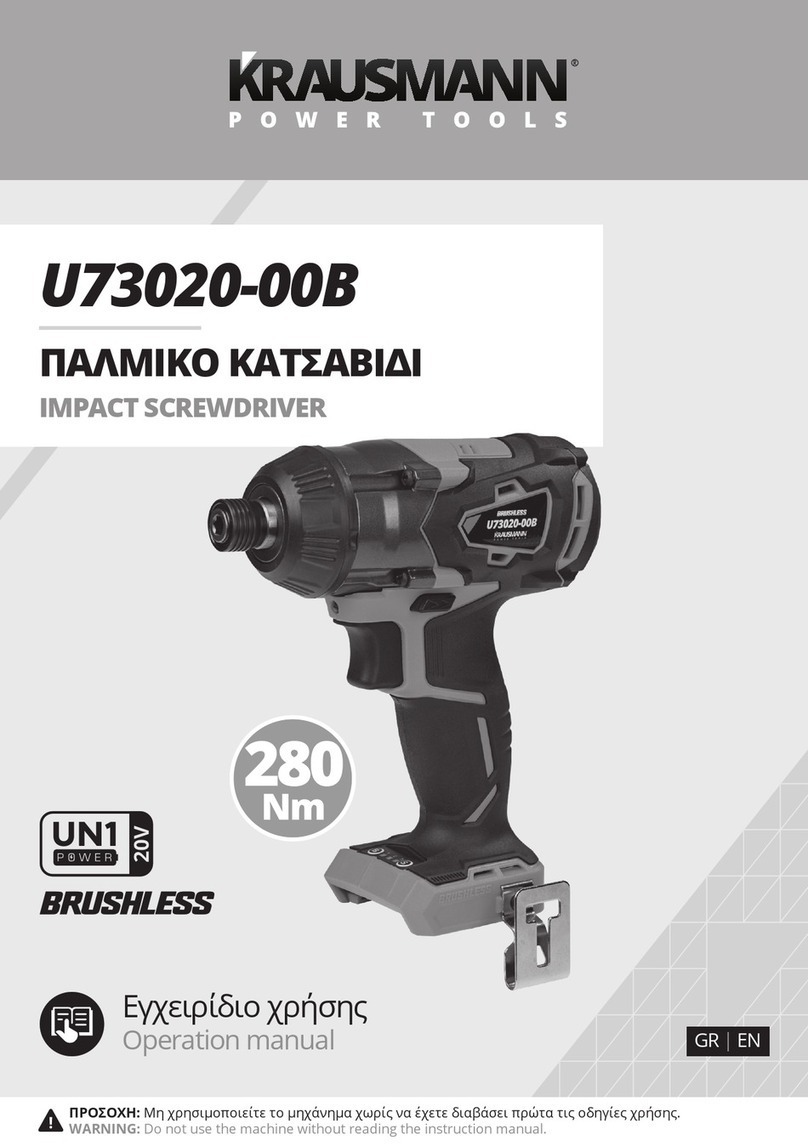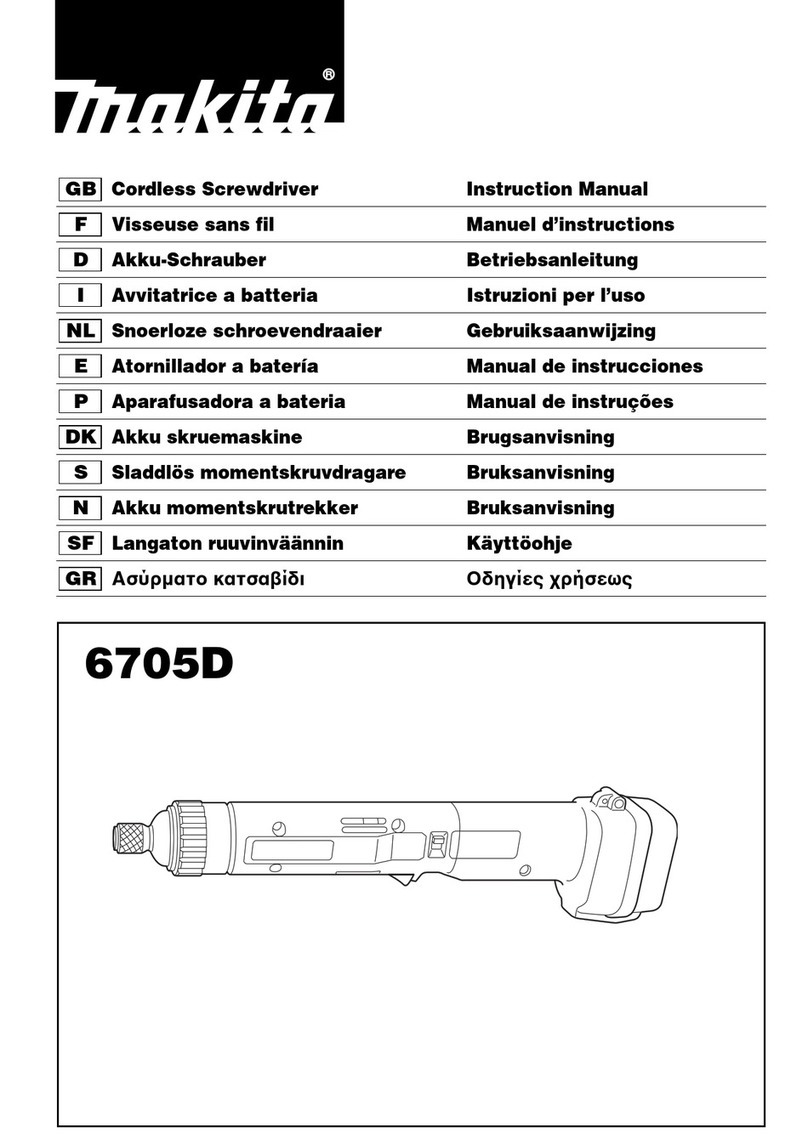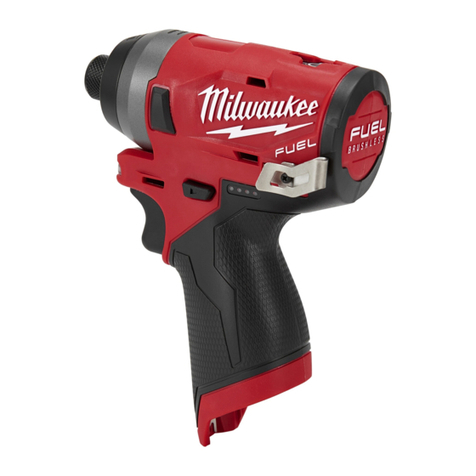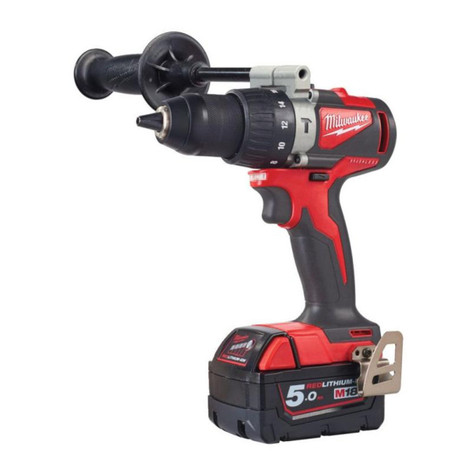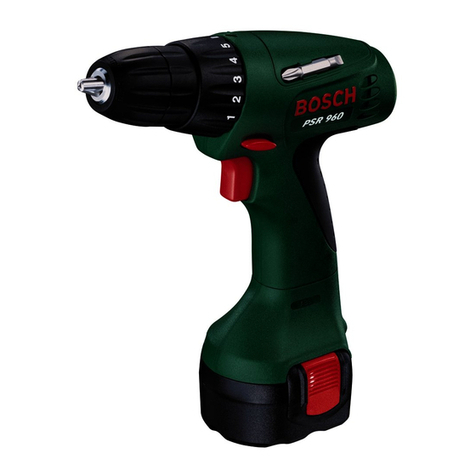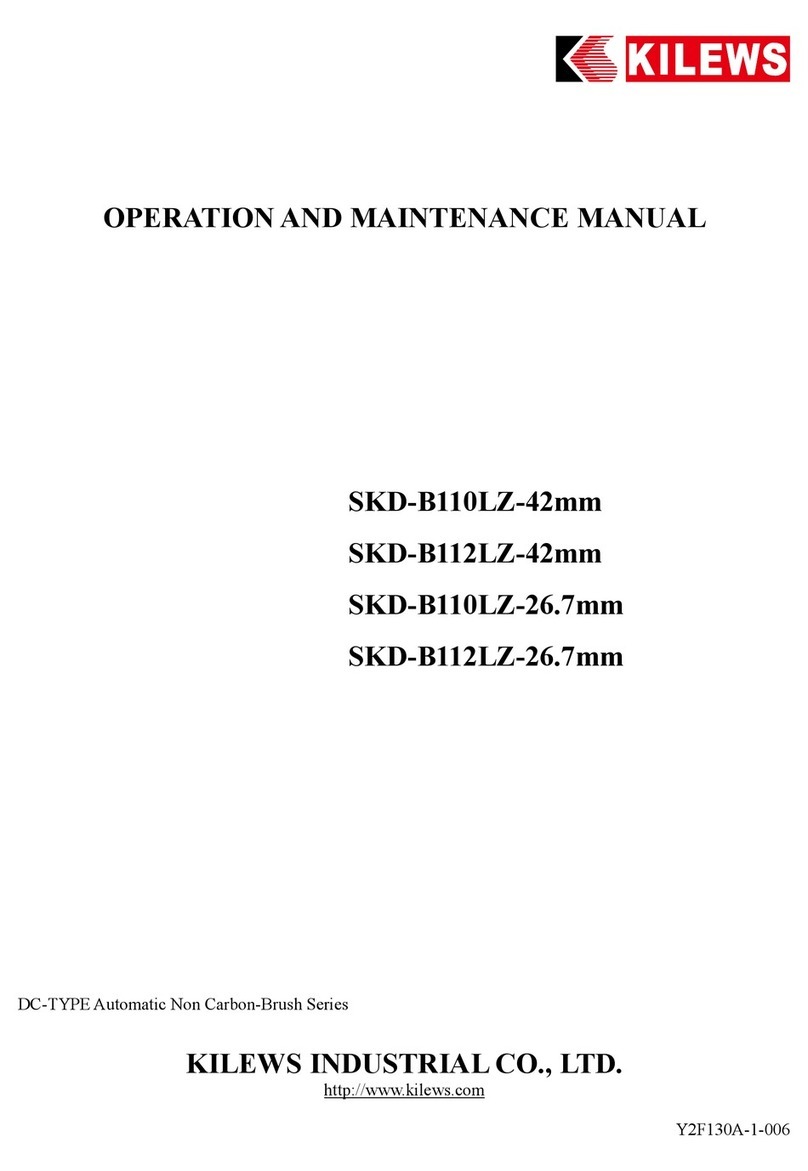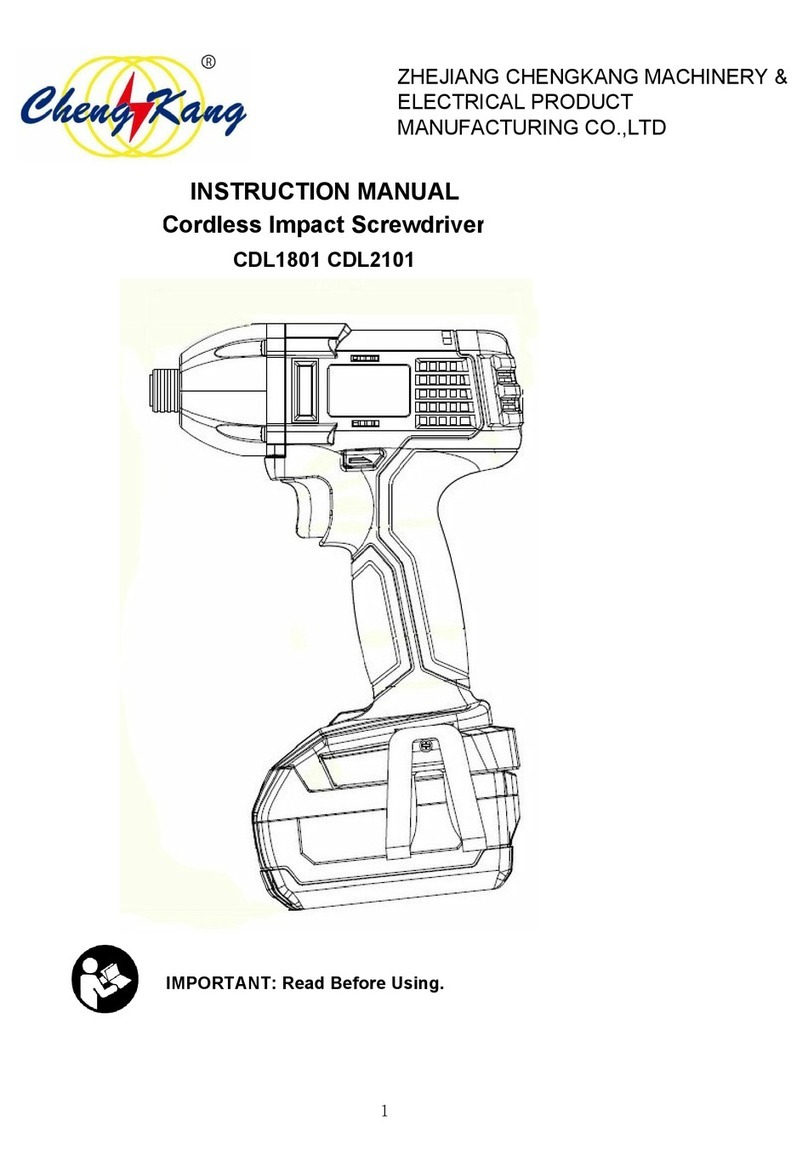Mac Afric SSCREW-001 User manual


GENERAL POWER TOOL SAFETY WARNINGS
(For All Power Tools)
WARNING! Read and understand all instructions.
Failure to follow all
instructions listed below may result in electric shock, fire and/or serious
personal injury.
Save all warnings and instructions for future reference.
The term “power tool” in the warnings refers to your mains-operated (corded) power tool or
battery-operated (cordless) power tool.
Work Area Safety
1. Keep work area clean and well lit.
Cluttered or dark areas invite accidents.
2. Do not operate power tools in explosive atmospheres, such as in the presence of
flammable liquids, gases, or dust.
Power tools create sparks which may ignite the dust or
fumes.
3. Keep children and bystanders away while operating a power tool.
Distractions can cause
you to lose control.
Electrical Safety
4. Power tool plugs must match the outlet. Never modify the plug in anyway. Do not use any
adapter plugs with earthed (grounded) power tools.
Unmodified plugs and matching
outlets will reduce risk of electric shock.
5. Avoid body contact with earthed or grounded surfaces, such as pipes, radiators, ranges
and refrigerators.
There is an increased risk o electric shock if your body is earthed or
grounded.
6. Do not expose power tools to rain or wet conditions.
Water entering a power tool will
increase the risk of electric shock.
7. Do not abuse the cord. Never use the cord for carrying, pulling or unplugging the power
tool. Keep cord away from heat, oil, sharp edges or moving parts.
Damaged or entangled
cords increase the risk of electric shock.
8. When operating a power tool outdoors, use an extension cord suitable for outdoor use.
Use of a
cord suitable for outdoor use reduces the risk of electric shock.
9. If operating a power in a damp location is unavoidable, use a residual current device (RCD)
protected supply.
Use of an RCD reduces the risk of electric shock.
NOTE: The term “residual current device (RCD)” may be replaced by the term “ground fault
circuit interrupter (GFCI)” or “earth leakage circuit breaker (ELCB)”.
Personal Safety
10. Stay alert, watch what you are doing and use common sense when operating a power tool. Do
not use a power tool while you are tired or under the influence of drugs, alcohol, or medication.
A moment of inattention while operating power tools may result in serious personal injury.
11. Use personal protective equipment. Always wear eye protection.
Protective equipment such as
dust mask, non-skid safety shoes, hard hat, or hearing protection used for appropriate
conditions will reduce personal injuries.
12. Prevent unintentional starting. Ensure the switch is in the off-position before connecting to
power source and /or battery pack, picking up or carrying the tool.
Carrying power tools with
your finger on the switch or energising power tools that have the switch on invites accidents.
13. Remove any adjusting key or wrench before turning the tool on.
A wrench or a key left
attached to a rotating part of the power tool may result in personal injury.
14. Do not overreach. Keep proper footing and balance at all times.
This enables better control of
the power tool in unexpected situations.
15. Dress properly. Do not wear loose clothing or jewellery. Keep your hair, clothing, and gloves
away from moving parts.
Loose clothes, jewellery or long hair can be caught in moving parts.
16. If devices are provided for the connection of dust extraction and collection facilities, ensure
these are connected and properly used.
Use of dust collection can reduce dust-related
hazards.

Power Tool Use and Care
17. Do not force the power tool. Use the correct power tool for your application.
The correct
power tool will do the job better and safer at the rate for which it was designed.
18. Do not use tool if switch does not turn it on or off.
Any power tool that cannot be
controlled with the switch is dangerous and must be repaired.
19. Disconnect the plug from the power source and/or the battery pack from the power tool
before making any adjustments, changing accessories, or storing power tools.
Such
preventive safety measures reduce the risk of starting the power tool accidentally.
20. Store idle power tools out of the reach of children and do not allow persons unfamiliar
with the power tool or these instructions to operate the power tool.
Power tools are
dangerous in the hands of untrained users.
21. Maintain power tools. Check for misalignment or binding of moving parts, breakage of
parts and any other condition that may affect the power tool’s operation. If damaged,
have the power tool repaired before use.
Many accidents are caused by poorly
maintained power tools.
22. Keep cutting tools sharp and clean.
Properly maintained cutting tools with sharp cutting
edges are less likely to bind and are easier to control.
23. Use the power tool, accessories and tool bits etc. in accordance with these instructions,
taking into account the working conditions and the work to be performed.
Use of the
power tool for operations different from those intended could result in a hazardous
situation.
Service
24. Have your power tool serviced by a qualified repair person using only identical
replacement parts.
This will ensure that the safety of the power tool is maintained
.
VOLTAGE WARNING:
Before connecting the machine to a power source (receptacle, outlet, etc.), be sure the
voltage supplied is the same as that specified on the nameplate of the machine. A power
source with voltage greater than that specified for the machine can result in SERIOUS INJURY
to the user, as well as damage to the machine. If in doubt, DO NOT PLUG IN THE MACHINE.
Using a power source with voltage less than nameplate rating is harmful to the motor.
SPECIFICATIONS
Rated Power Input 710 W
No-load Speed 0-4300 r/min
Max. Screw Diameter
Drywall Screw
5 mm
Self Drilling Screw
6 mm
Drive Shaft 6.35 mm
Net Weight 1.6 Kg
※Due to the continuing program of research and development, the specifications herein are
subject to change without prior notice.
ADDITIONAL SAFETY RULES
1. To be safe, disabled, retarded, untrained people or people disable to operate independently,
including young children, are discouraged to operate the tool without supervision. Young
children should be supervised to ensure that they do not play with the tool.
2. Hold tool by insulated gripping surfaces when performing an operation on wall and floor where
the cutting tool may contact hidden wiring. Contact with a “live” wire will also make exposed
metal parts of the tool “live” and shock the operator.
3. Use appropriate detectors to determine if utility lines, such as electric lines, gas lines and
water lines, are hidden in the work area before screwing or drilling on the wall, floor or ceiling.
4. Always be sure to have a firm footing and hold the tool firmly.
5. Keep hands away from rotating parts.
6. Switch off the tool immediately once the drill bit is blocked as the motor or the battery maybe
damaged because of overloaded. Free the drill bit by reversing the rotation of the drill bit
which can be controlled by the switch.
7. Do not leave the tool running. Operate the tool only when hand-held.
8. Be sure not to use the tool with damaged cord in case of electric shock accidents.
9. Do not touch the drill bit or the workpiece immediately after operation; they may be
extremely hot and could burn your skin.

10. Some material contains chemicals which may be toxic. Take caution to prevent working
dust inhalation and skin contact. Follow material supplier safety data.
11. The damaged tools, accessories and waste packaging should be sorted for
environmentally friendly recycling and in accordance with local laws.
12. Always lead the power supply cord away from the tool towards the rear.
13. Always be sure to have a firm footing. Wear safety belt when using this tool in high
locations and ensue no one is below.
SAVE THESE INSTRUCTIONS.
WARNING! MISUSE or failure to follow the safety rules stated in this instruction manual
may cause serious personal injury.
INSTRUCTIONS FOR OPERATION
Switch Action
CAUTION:
Before plugging in the tool, always check to see
that the switch trigger actuates properly and
returns to the “OFF” position when released.
To start the tool, simply pull the switch trigger. Tool
speed is increased by increasing pressure on the
switch trigger. Release the trigger to stop. (Fig. 1)
For continuous operation, pull the switch trigger and
then push in the lock button. (Fig. 1)
This tool has a reversing switch to change the direction of rotation. Move the switch lever to
the position for clockwise rotation or the position for counterclockwise rotation.
CAUTION:
Always check the direction of rotation before operation. Changing the direction of rotation only
after the tool comes to a complete stop, otherwise it may damage the tool.
Depth Adjustment
The depth can be adjusted by turning the lock
ring. 1/6 turn of the lock ring equals 0.25mm (10
mil) change in depth. Stop turning when you
obtain the proper depth setting. (Fig. 2)
Always drive a trial screw into your material or
a piece of duplicate material before use. (Fig. 3)
Operation
The bit will not rotate even if the tool is
switched on. Fit the screw onto the point of the
bit, push in on the screw, and the clutch will
engage, then the bit will rotate. Keep your hand
with the bit in a straight line to ensure the
pressure applied by the hand can be delivered
to the bit effectively. (Fig. 4)
Installing or Removing Driver Bit
To remove the bit, first remove the locator by
pulling the lock ring away from the gear
housing. (Fig. 5)

Grasp the bit with a pair of pliers and pull the bit
out of the magnetic bit holder. Then install the
locator by pushing it firmly back onto the gear
housing. (Fig. 6)
Matching of the Bit and Screw
Only the bit matches the groove of the Philips head can you tighten the screw properly. Please see
the following chart :
Bit No.
Standard Diameter (mm)
PH1
Wood Screw
2.1-2.7
Metal Screw
M2-M2.6
PH2
Wood Screw
3.2-4.8
Metal Screw
M3-M5.5
Wallboard Screw
NO. 6
MAINTENANCE
CAUTION:
Always be sure that the tool is switched off and
unplugged before attempting to perform inspection
or maintenance.
Replacing carbon brushes
Remove and check the carbon brushes regularly.
Replace when they wear down to the limit mark.
Keep the carbon brushes clean and free to slip in the holders. Both carbon brushes should be
replaced at the same time. Use only identical carbon brushes. (Fig. 7)
Maintenance of the Motor
The motor unit winding is the very “heart” of the power tool. Exercise due care to ensure the
winding does not become damaged and /or wet with oil or water.

※Damaged cord must be replaced by a special cord purchased from authorized service
center.
※To maintain product SAFETY and RELIABILITY, repairs, any other maintenance or
adjustment should be performed by authorized centers, always using original replacement
parts.
EXPLAINATION OF GENERAL VIEW
1
Bit 27 Armature
2
Bit Holder 28 Insulation Washer
3
Locator 29 Ball Bearing
4
Rubber Seal 30 Bearing Cover
5
O Ring 31 Baffle Plate
6
Locking Cover 32 Pan Head Tapping Screw
7
Steel Band 33 Stator
8
Dust Seal 34 Motor Housing with Handle
9
Pan Head Tapping Screw 35 Hook
10
Gear Housing 36 Carbon Brush
11
Bearing 37 Carbon Brush Holder
12
Pin 38 Belleville Spring
13
Washer 39 Switch
14
Steel Band 40 Fixed Part of Switch
15
Drive Spindle 41 Handle Cover
16
Steel Ball 42 Pan Head Tapping Screw
17
Spring 43 Inductance
18
Connecting Rod 44 Inductance
19
Gear 45 Wire Assembly
20
Thrust Washer 46 Wire Assembly
21
Thrust Needle 47 Wire Assembly
22
Needle Bearing BK0810(SBF)48 Wire Assembly
23
Gear Housing Cover 49 Capacitor
24
Damping Washer 50 Cord
25
Ball Bearing 51 Cord Guard
26
Washer 52 Strain Relief
Table of contents
Popular Power Screwdriver manuals by other brands
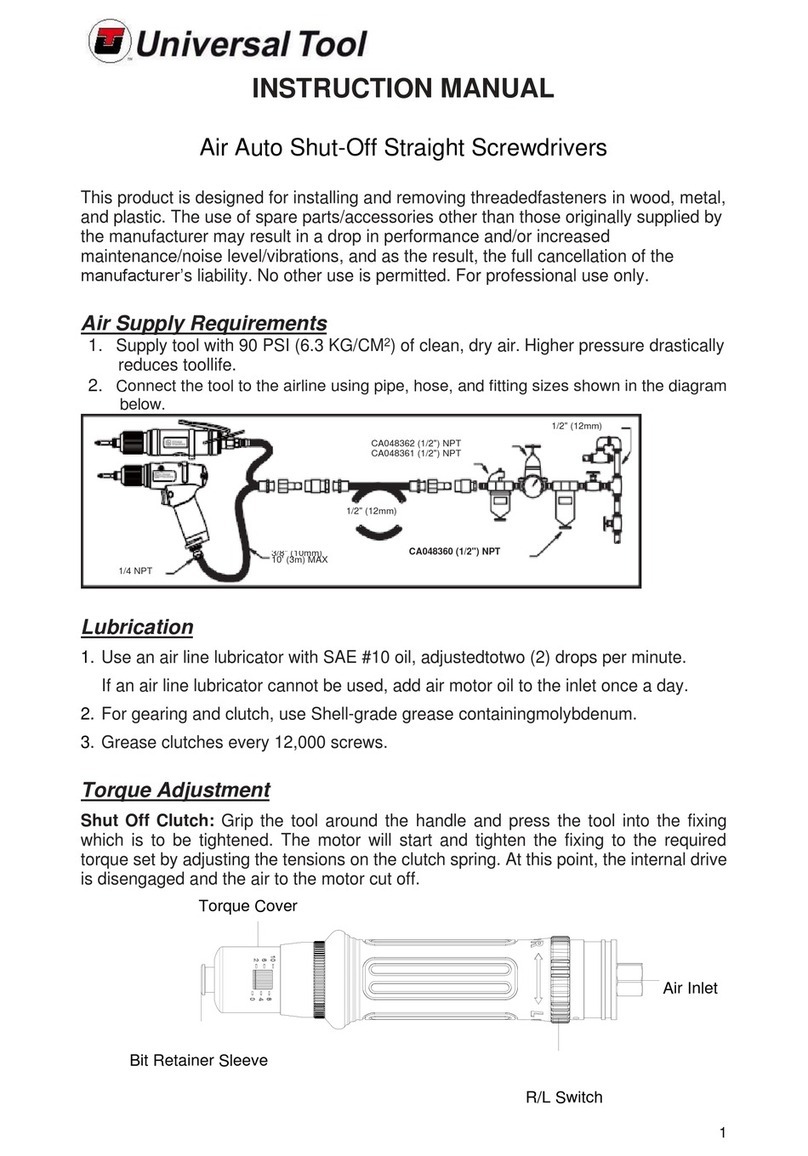
Universal Tool
Universal Tool UT8934 instruction manual
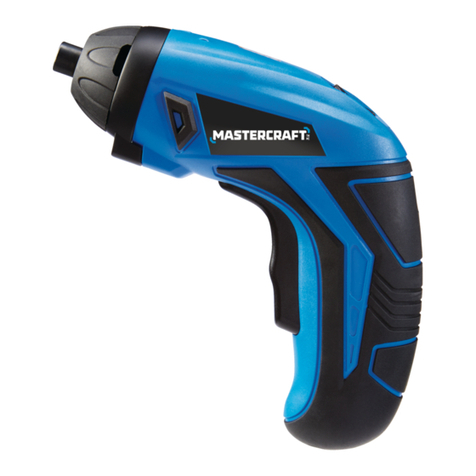
MasterCraft
MasterCraft TBD instruction manual
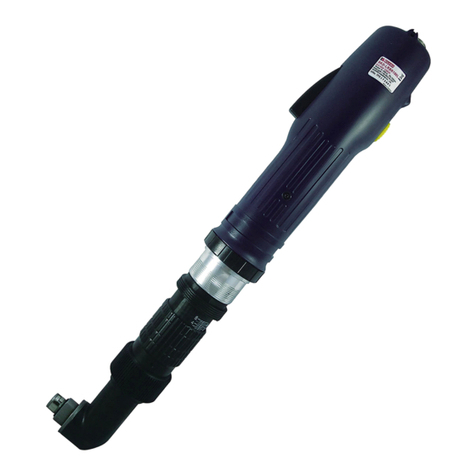
Kilews
Kilews SKD-LRBNK50 Operation and maintenance manual
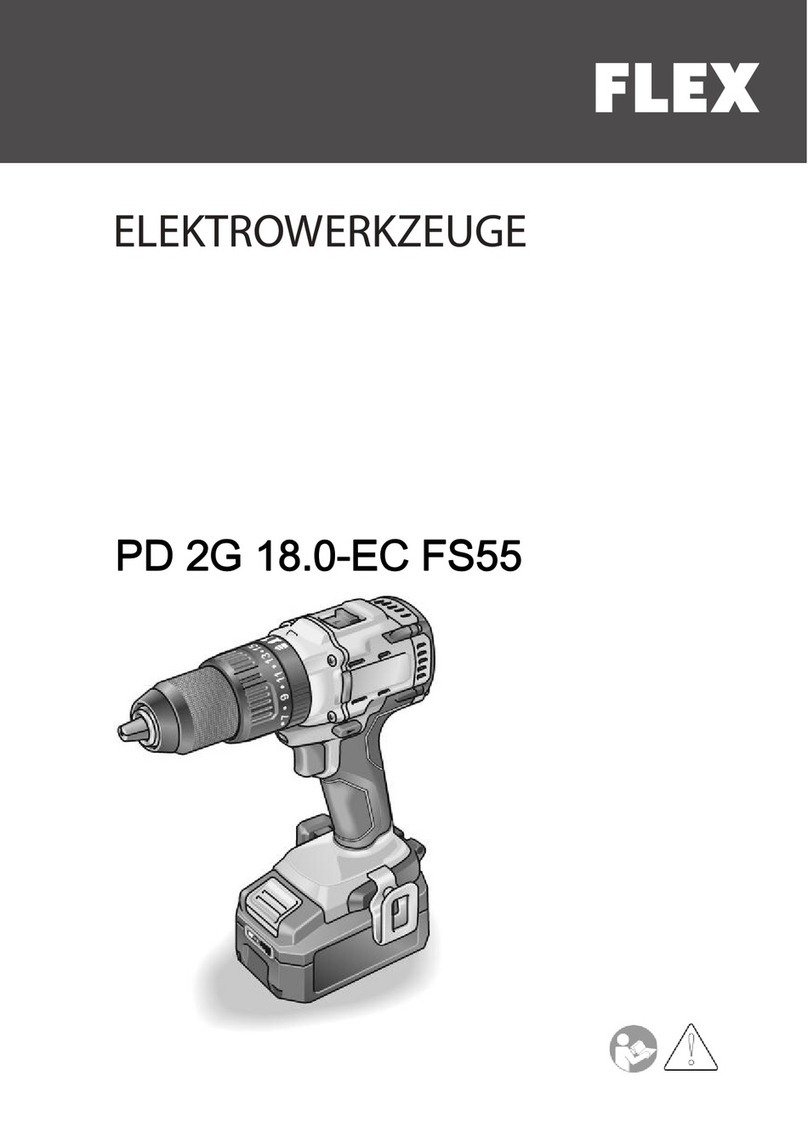
Flex
Flex PD 2G 18.0-EC FS55 operating instructions

Chicago Pneumatic
Chicago Pneumatic CP2036 series Operator's manual

Bahco
Bahco TSS600 Original instructions
